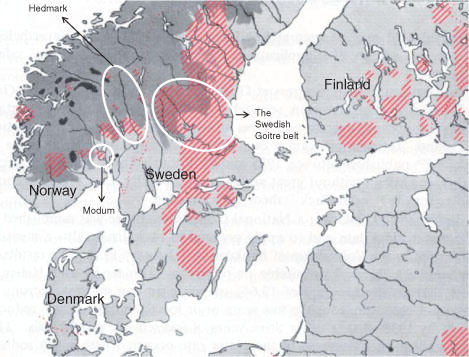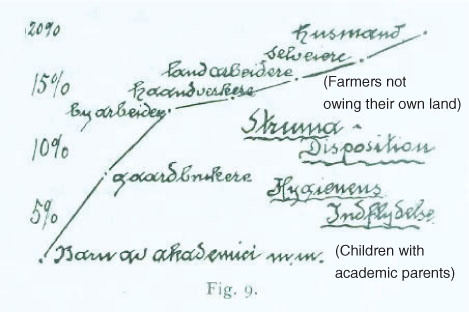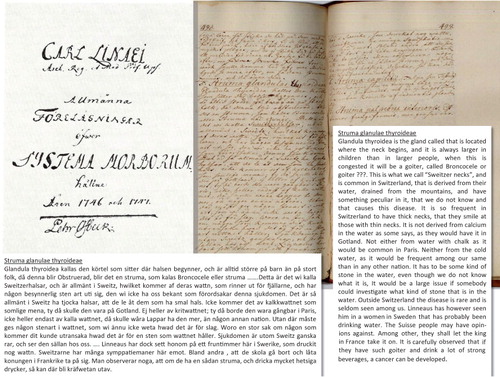Figures & data
Table 1 Comparisons of the Nordic countries regarding geological conditions, iodine levels in water, and historical data on iodine intake levels
Fig. 1 Map of the Nordic countries (except Iceland) in 1960 (Citation55). Dark gray represents mountain areas and striped areas are goiter regions. Sweden still has large areas of goiter 24 years after the start of the iodization program and the salt iodine content was increased in 1966. Goitrous areas are also seen in Norway and Finland.

Fig. 2 Social factors that influenced the goiter frequency in Norway. This is a handwritten note by Carl Schiøtz, who investigated the prevalence of goiter in the Norwegian inland county Hedmark in 1914. In the figure, he indicates the prevalence according to social class: the lowest prevalence was among children of academics, the highest prevalence among farmers not owning their own land (a cotter) (English translation in brackets).

Fig. 3 Goiter as it was first described in Sweden; lecture notes by Per Osbeck that attended one of Carl von Linné's classes, 1746–1747's copy from the Hagströmer Library; Stockholm, Sweden.

Table 2 Comparison of risk populations in the Nordic countries according to available data
